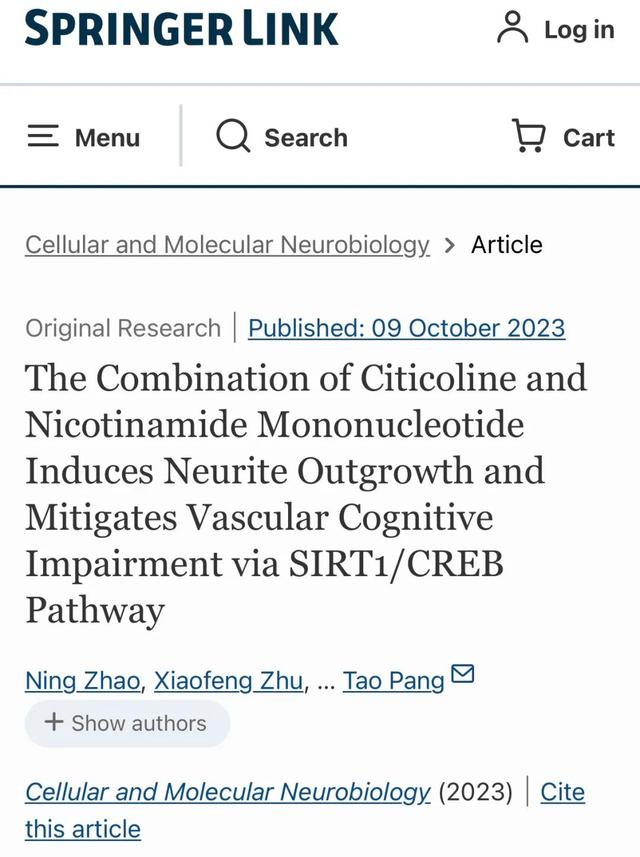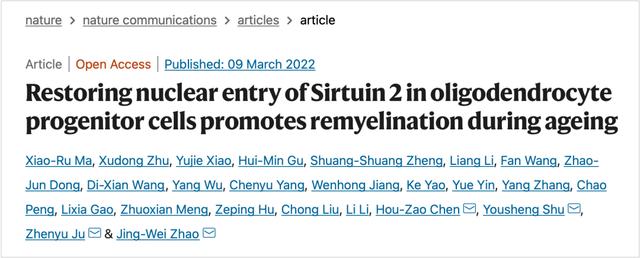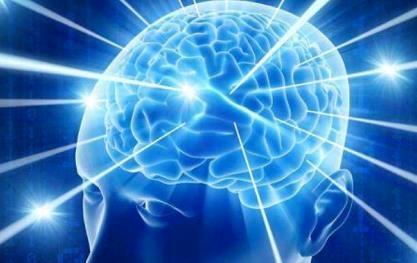A Latest Study: NMN and Cytidine May Prevent Memory Decline
There are 100 billion nerve cells in the human brain, which gradually decrease by the age of 20;
By the age of 40, the brain loses 10000 nerve cells per day, accompanied by a decline in memory and brain function.
A latest NMN study on vascular dementia has been released.
Researchers from Hangzhou Normal University have discovered a protective measure that helps prevent vascular dementia (VD).
Vascular dementia (VD) is the second most common type of dementia after Alzheimer’s disease, particularly common in North America and Europe.

In Cell and Molecular Neurobiology, researchers have discovered a new method that can effectively alleviate memory loss in vascular dementia (VD) rats.
They found that the combined effect of NMN and choline can reduce inflammation and brain damage,
thereby providing greater cognitive protection.
This study reveals that the combination of anti-aging compounds can provide better cognitive protection for dementia mice compared to using them alone.
“We have demonstrated that the binding of Citicoline powder and NMN in vascular dementia [VD] rats can maintain the normal physiological state of neurons,
inhibit neuroinflammation in the brain, and ultimately alleviate white matter damage and cognitive dysfunction in vascular dementia [VD] rats.”
From the mechanism of aging,
various aging symptoms that come with age are closely related to the decrease in NAD+levels in the body,
and the health of the brain is no exception.
So, does increasing NAD+levels in the body help with anti-aging in the brain?
Let’s take a look at other past studies together,
NMN can protect cerebral microvasculature,
ensuring the delivery of oxygen and nutrients required by the brain, as well as the excretion of metabolites.
Relieve oxidative stress on cerebral microvascular endothelium. Activate SIRT1, increase cerebral blood flow, and improve cognitive ability.
At the same time, it can also prevent memory impairment caused by radiotherapy and chemotherapy, and protect nerves.
NMN prevents aging of the nervous system

In March 2022, a research team from the School of Medicine of Zhejiang University published their findings in Nature Communication,
which showed that supplementing with NMN activated the expression of SIRT2 and restored myelin regeneration ability,
demonstrating the enormous potential of NMN in preventing aging of the nervous system.
In 2019, Dr. Tarantini S and others from the University of Oklahoma Health Science Center found that intraperitoneal injection of NMN has a significant protective effect on the cerebral microvasculature of aging mice.
NMN can alleviate oxidative stress on the cerebral microvascular endothelium, improve endothelial function, and rescue the neurovascular coupling (NVC) response in the cortex of aging mice,
which may help improve cortical function.
In 2020, Dr. Tamas Kiss and others from the University of Oklahoma Center for Health Sciences found that restoring cellular NAD+levels in aging mice through intraperitoneal injection of NMN can salvage neurovascular function,
increase cerebral blood flow, and improve cognitive abilities.

Researchers injected NMN into the abdominal cavity of 24 month old mice for two consecutive weeks and compared the data with the control group.
Out of 590 differentially expressed genes in older people neurovascular units, 204 restored to younger expression levels through NMN.
There are still many ongoing trials, such as the therapeutic effects of NMN on different insomnia patients,
the importance of NMN and NAD+in cardiovascular and neurodegenerative diseases, etc. We believe that it can discovered with more efficacy and usage methods.




